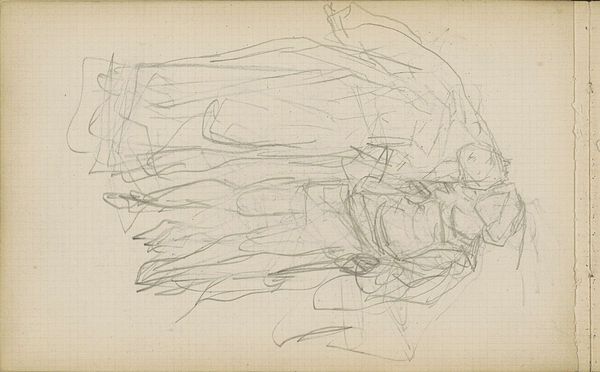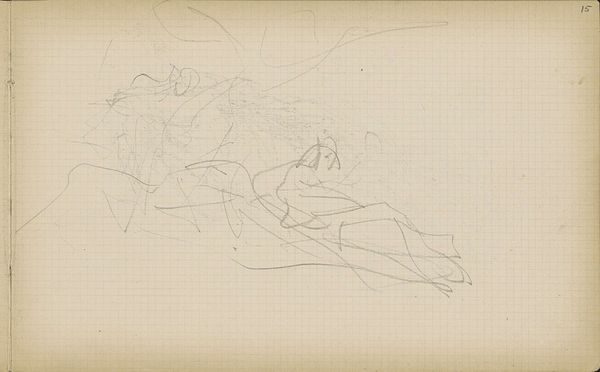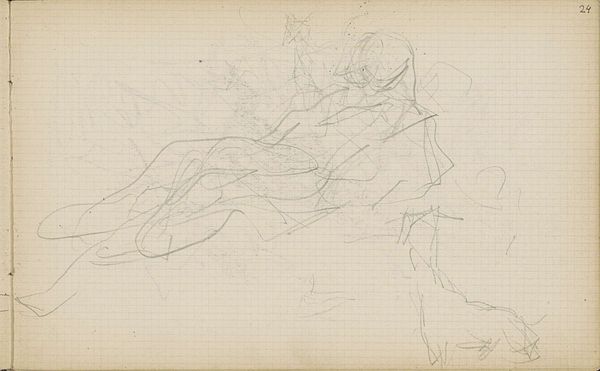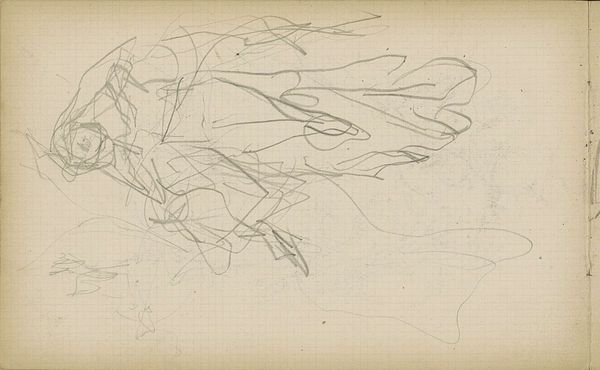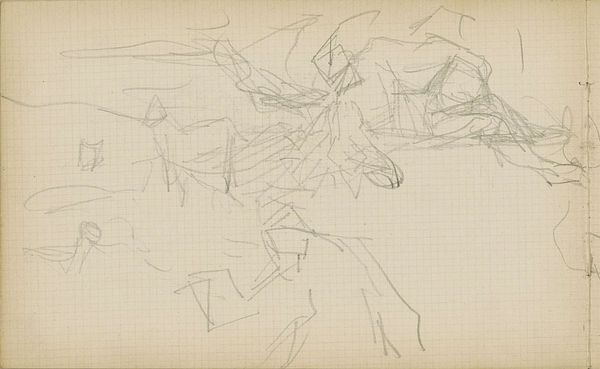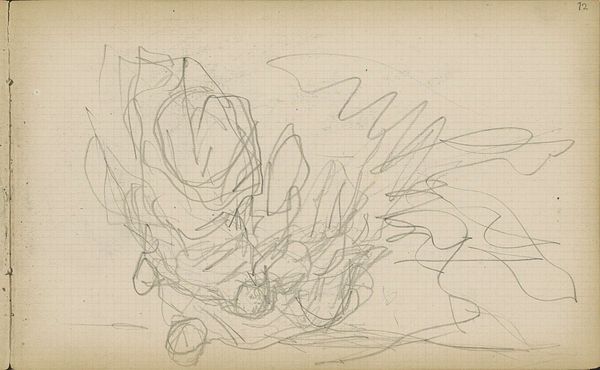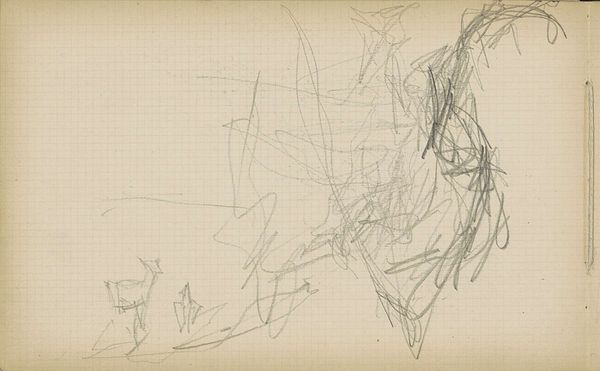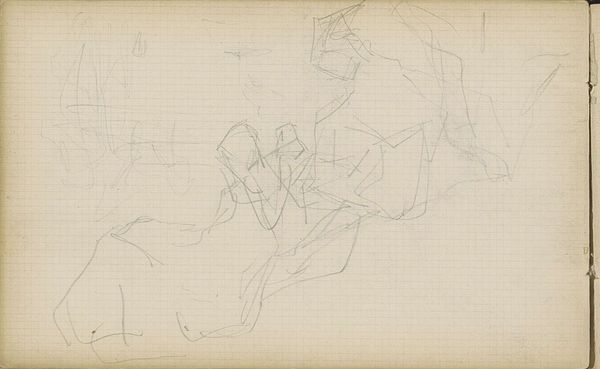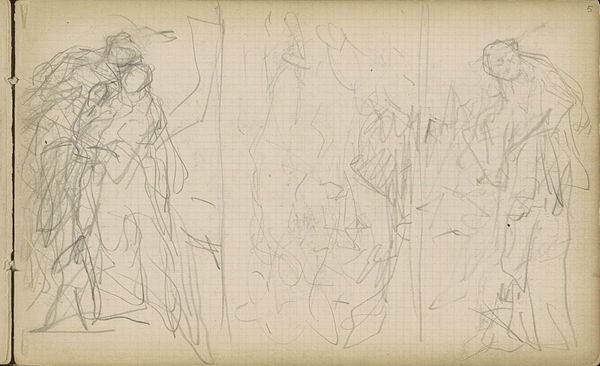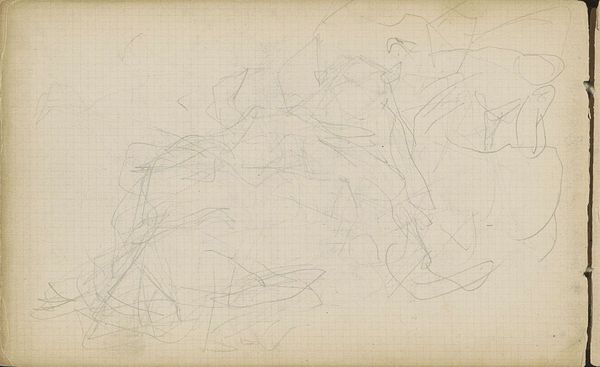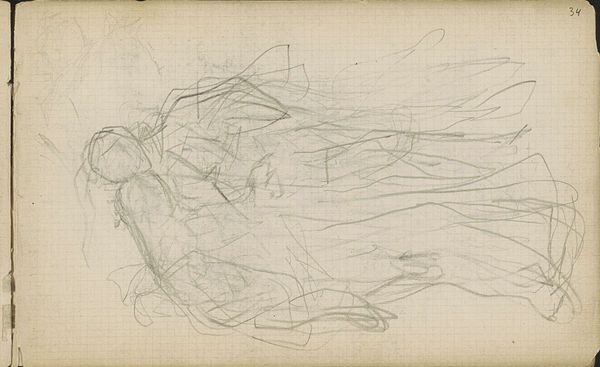
drawing, paper, pencil
#
portrait
#
drawing
#
pencil sketch
#
figuration
#
paper
#
pencil
#
academic-art
#
realism
Copyright: Rijks Museum: Open Domain
Curator: Before us is "Vrouw met lange haren, het hoofd opzij gebogen," which translates to "Woman with Long Hair, Head Turned Sideways," a pencil drawing on paper attributed to Matthijs Maris, dating roughly from 1849 to 1917. It’s part of the Rijksmuseum collection. Editor: It looks unfinished, almost ethereal. The lines are so light, fleeting even. There is an inherent tension in the unfinished aspect and, simultaneously, a compelling fragility. Curator: Indeed. The perceived lack of finish could also reflect a shifting dynamic in the art world during Maris's time. Academic art prized hyperrealism, but here we see a rejection of concrete lines for emotive suggestion. We should recall, the artist, lived through monumental shifts in Dutch society—urbanization, industrialization. Editor: Perhaps that ambiguity reflects the instability. The subject, though partially rendered, doesn’t project solidity. It lacks classical definition, and rather explores tonal washes of graphite to shape an almost amorphous form. It is fascinating how it deconstructs ideas about traditional portraiture, and plays with a very delicate composition. Curator: That deconstruction resonates. Academic training still valued precise anatomy, and mastery of line and form above all. One might assume this preparatory work captures an informal or private moment. Pencil was quite democratized; its affordability made sketching accessible beyond the upper classes. It's fascinating how quickly Maris seems to capture his subject. Editor: Agreed. Its very lack of 'finish' gives it a certain kind of immediacy, almost rawness, not always granted with larger-scale academic portraits, yet a very deliberate construction is unfolding before our eyes as the network of lines resolve themselves into recognizable contours of human form. Curator: The visible, layered process offers such insight. To think of the cultural landscape in which Maris operates—he navigates, reacts against its institutions. It's important to analyze artistic vision through this lens of continuous negotiation and cultural influence. Editor: I appreciate the raw honesty of the line work, almost like a direct conduit from thought to paper. Curator: Indeed, thank you. That concludes our reflection on this drawing; I trust our listeners will consider the complexities embedded in what appears, at first glance, to be merely a quick sketch. Editor: An intriguing dialogue that leaves me with an elevated appreciation for the evocative power within apparent artistic brevity.
Comments
No comments
Be the first to comment and join the conversation on the ultimate creative platform.

